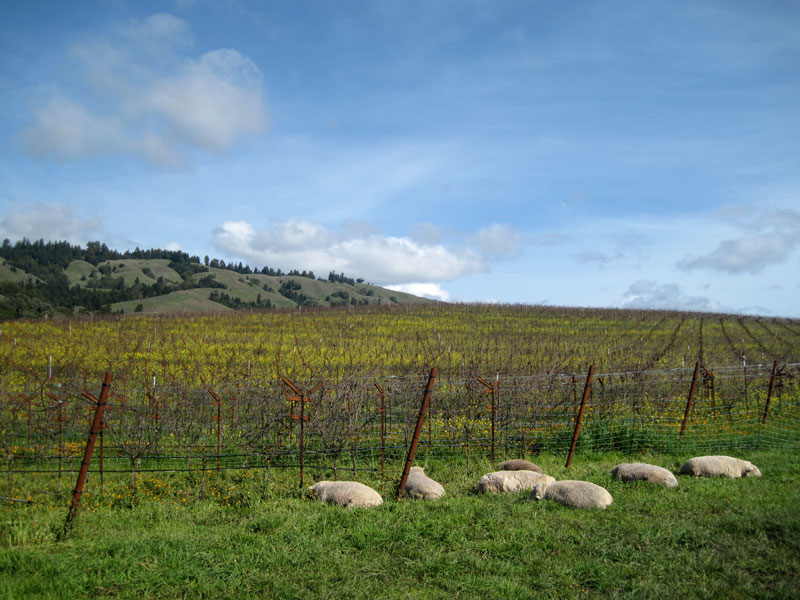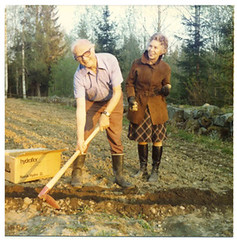
In more ways than one! I don't know how it is in your community, but around here, cycling as a form of tranportation is finally getting some press. First, the Secretary of Transportation, a Washington, D.C. cyclist himself, talked about the importance of cycling infrastructure on National Public Radio. Locally, my city (Rochester, New York) has been listed as one of the top 50 U.S. cities for bicycling by Bicycling magazine. Okay, granted, it's number 50, but we still made the list! Finally, Rochester is also working on a bicycling master plan.
And, with the rise in gas prices and the recent tragedy of the oil spill in the Gulf of Mexico, many people are turning to cycling as transportation to minimize the use of fossil fuels.
Well, there is a definite need for public policy advocacy in terms of the issues surrounding the oil spill, but that's a topic for many other blogs. With sewgreen's emphasis on living in an earth-friendly manner, I thought I would address one of the perceived barriers for people who would like to commute to work by bike: what to wear.
Specifically, I have found I really have to have a system for what to wear on the bike, and what to wear once I get to work. Some people have jobs where dress is not an issue, and others are comfortable wearing business attire while biking. That's not the case for me, though.
First of all, like I said, biking is hot! Even when it's relatively cool outside and I'm going a short distance, I sweat. So, for the ride, I wear comfortable clothing. It doesn't have to be bright neon lycra and spandex, but light-colored clothing is helpful in terms of visibility. Generally, I wear what I would wear for a walk, except that I pretend the temperature is about 15-20 degrees (Fahrenheit) higher than it actually is, and dress accordingly. (I tend to get warm very quickly; your internal thermostat may vary.)
I carry lunch, clothing, and anything else I need for the day in 2 rear panniers on my bike. I recommend ones that are waterproof, as you never know when a downpour might come. (I'm looking out the window at one right now and hoping that it stops before I have to bike home!) Two panniers are better than one if you carry much of a load at all, as they allow you to evenly distribute the weight.
And, with the rise in gas prices and the recent tragedy of the oil spill in the Gulf of Mexico, many people are turning to cycling as transportation to minimize the use of fossil fuels.
Well, there is a definite need for public policy advocacy in terms of the issues surrounding the oil spill, but that's a topic for many other blogs. With sewgreen's emphasis on living in an earth-friendly manner, I thought I would address one of the perceived barriers for people who would like to commute to work by bike: what to wear.
Specifically, I have found I really have to have a system for what to wear on the bike, and what to wear once I get to work. Some people have jobs where dress is not an issue, and others are comfortable wearing business attire while biking. That's not the case for me, though.
First of all, like I said, biking is hot! Even when it's relatively cool outside and I'm going a short distance, I sweat. So, for the ride, I wear comfortable clothing. It doesn't have to be bright neon lycra and spandex, but light-colored clothing is helpful in terms of visibility. Generally, I wear what I would wear for a walk, except that I pretend the temperature is about 15-20 degrees (Fahrenheit) higher than it actually is, and dress accordingly. (I tend to get warm very quickly; your internal thermostat may vary.)
I carry lunch, clothing, and anything else I need for the day in 2 rear panniers on my bike. I recommend ones that are waterproof, as you never know when a downpour might come. (I'm looking out the window at one right now and hoping that it stops before I have to bike home!) Two panniers are better than one if you carry much of a load at all, as they allow you to evenly distribute the weight.
I find it fairly easy to towel off at work and change into my work clothes. After many times of forgetting some essential piece of clothing, I keep the following in a filing cabinet at work: black shoes, a simple black top, black jacket, bra, and pantyhose. (Black goes with everything!) I also keep a pack towel (found in the camping section of stores, this is a very thin towel that dries quickly), deodorant, and hair product.
Speaking of hair, I'm an au naturel kinda gal, so hair and make-up is mostly a non-issue for me. My hair is extremely short, but I actually do still get helmet head. My solution for that is a cycling cap worn under my helmet. That helps capture some of the sweat and eliminates the indentations in my hair, which really wouldn't add much to my professional credibility.
As a case in point, yesterday, I biked to my first meeting of the day, at another campus of the college where I work than the one in which my office is located. I have biked there several times, and I have a favorite bike rack and big bathroom where it's easy to change. I got there, grabbed one of my panniers with my clothing in it, and changed for my meeting. I should have gotten there a bit earlier, as it was a muggy day and frankly I was still bright red when I got to the meeting. Fortunately it was a fairly casual group whom I know pretty well. I try to have about 10-15 minutes of cooling-down time before my meetings on hot days, but I just didn't have the timing right yesterday!
As a case in point, yesterday, I biked to my first meeting of the day, at another campus of the college where I work than the one in which my office is located. I have biked there several times, and I have a favorite bike rack and big bathroom where it's easy to change. I got there, grabbed one of my panniers with my clothing in it, and changed for my meeting. I should have gotten there a bit earlier, as it was a muggy day and frankly I was still bright red when I got to the meeting. Fortunately it was a fairly casual group whom I know pretty well. I try to have about 10-15 minutes of cooling-down time before my meetings on hot days, but I just didn't have the timing right yesterday!
My next meeting was at a university down the road/bike trail. I changed back into my biking clothes. I could be casual at this meeting, so I just changed into a clean and non-sweaty top for that meeting. Then I headed to my office, and followed my usual routine.
It took some planning, but by 11:30 that morning I had biked over 10 miles, just going about my business. All of these trips only took 5 minutes more (at most) than it would have to drive, and I got some exercise to boot.
Today, my partner gave my bike and me a ride to work (we do have a car; we just try to minimize driving as much as possible) because I was doing a video and didn't have time for the cooling down time. At the end of the day, I grabbed the pannier with my bike clothes in it, changed, and headed home. First, though, I did a 30-minute fast ride along the trail to get my aerobic workout in. Then I headed over to the neighborhood farmers' market. And finally I made it home.

Share your tips and/or questions about bike commuting in the comments!























